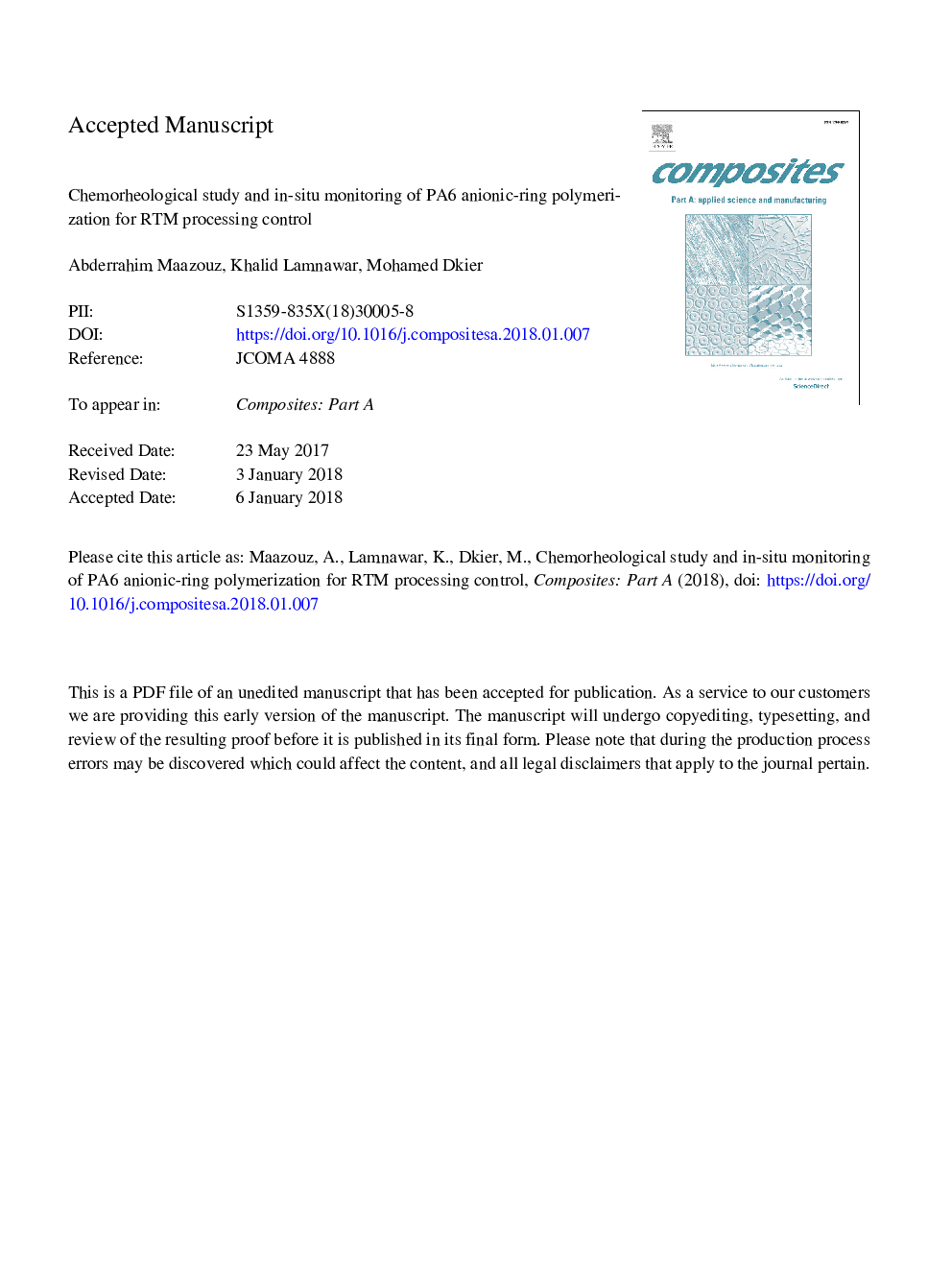| Article ID | Journal | Published Year | Pages | File Type |
|---|---|---|---|---|
| 7889710 | Composites Part A: Applied Science and Manufacturing | 2018 | 33 Pages |
Abstract
The main objective of this work was an experimental investigation making it possible to monitor, as well as achieve a deeper understanding of, the structural evolution of polyamide-6 as a thermoplastic-based composite matrix. Polyamide-6 from anionic ring-opening polymerization (AROP) of ε-caprolactam was chosen as a model matrix. Throughout this work, various formulations of PA with anionic polymerization from caprolactam were studied depending on different activator/catalyst pairs, concentrations and combinations. Moreover, chemorheological properties were first determined ex-situ by rheology coupled with FTIR and microdielectrometry. The extent of the reaction conversion was thus obtained and subsequently modeled. The formed PA6 matrix materials were fully characterized in terms of their viscosimetric properties and molar masses. In a second step, a hybrid extrusion resin transfer molding machine (T-ERTM) with an instrumented mold was designed for the in-situ monitoring. Thereby, specific dielectric sensors were used to follow the different processing steps for the manufacturing of complex and continuous glass fiber-reinforced parts. Furthermore, the reaction kinetics in competition with the crystallization were probed and quantified as a function of the processing parameters (mold temperature, times given for impregnation, time for demolding etc.). Calibration curves were obtained in which the ionic conductivity was correlated to the change of viscosity determined previously from ex-situ measurements. Indeed, a processing window was proposed for each PA6 system to ensure a good preform impregnation. Interestingly, the apparent conversion calculated from the online dielectric measurements corroborated the ex-situ values obtained from chemorheological studies. The viscosity and conversion evolution were then tracked in the mold. Based on the present findings and for the optimal formulation, a Time-Temperature-Transformation (TTT)-equivalent diagram was established from online measurements and related to the reactive processing to get a better handle on the PA6-based composite.
Related Topics
Physical Sciences and Engineering
Materials Science
Ceramics and Composites
Authors
Abderrahim Maazouz, Khalid Lamnawar, Mohamed Dkier,
